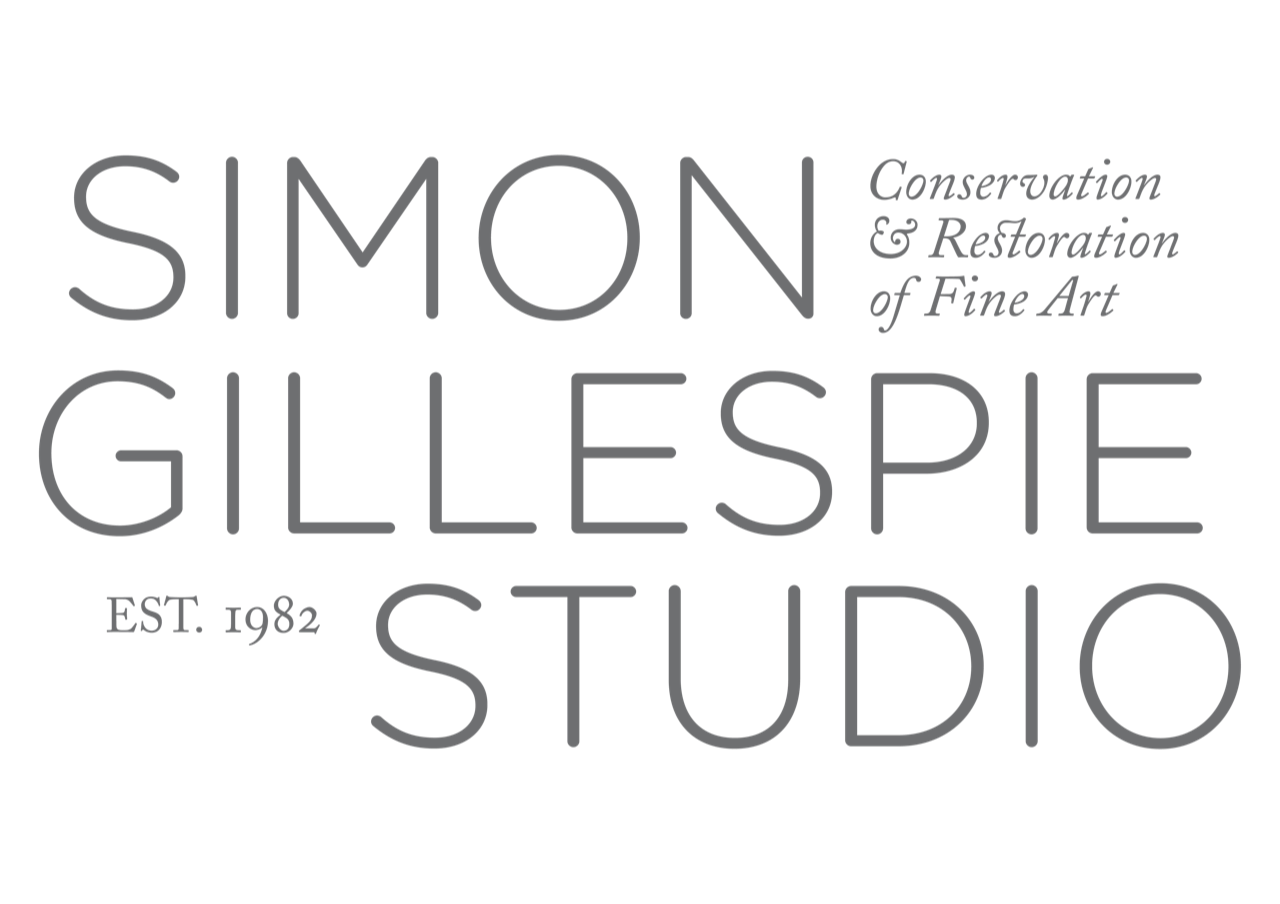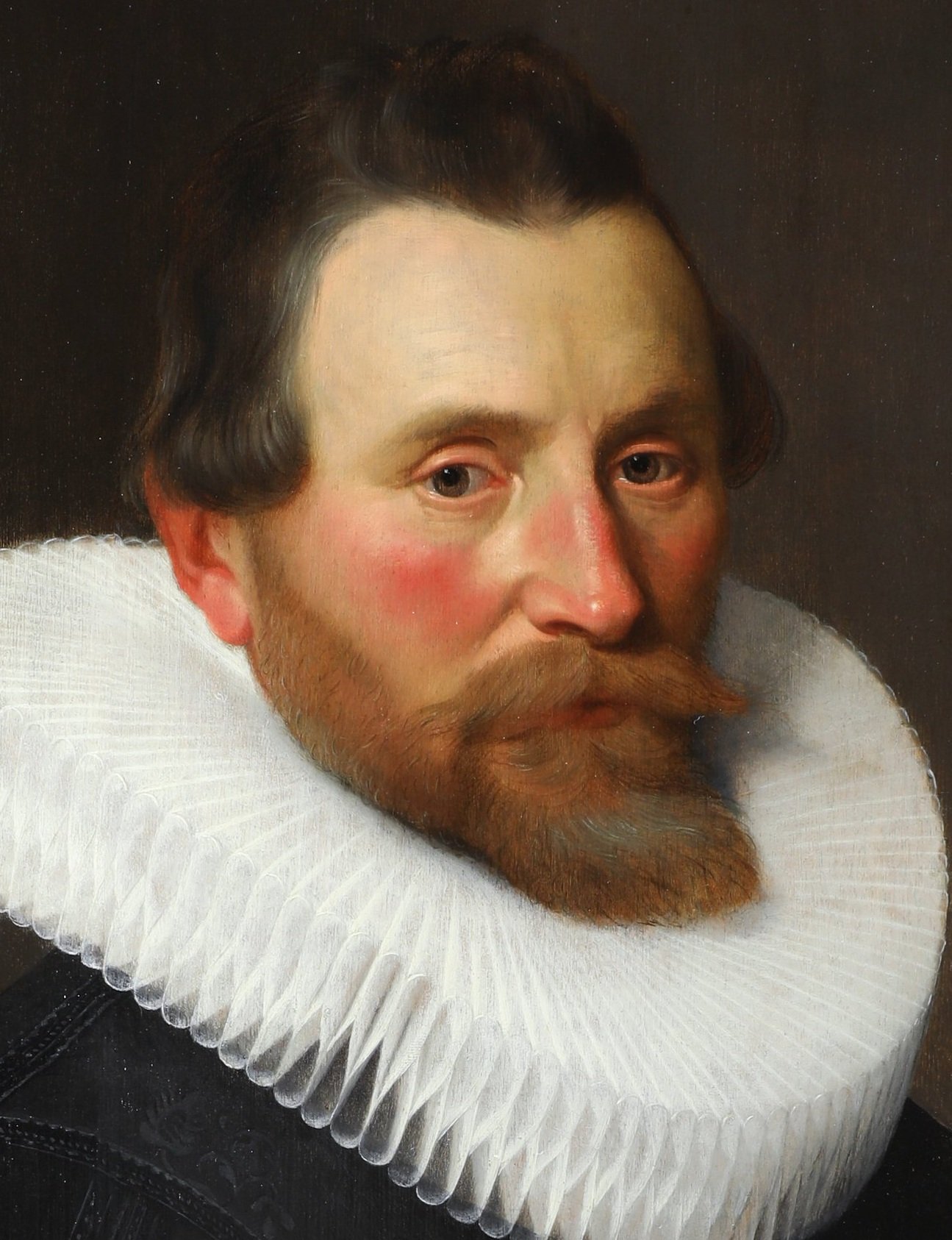Bust length portrait of a gentleman by Nicolaes Eliasz Pickenoy
Before treatment
After treatment
This portrait on panel was brought to our studio for treatment by a client who had recently purchased it at auction. The portrait is by Pickenoy (1588 – 1653/1656) a Dutch painter whose portraits can be found in international collections including the Rijksmuseum in The Netherlands.
It is a finely painted portrait, in oil on a wooden panel made up of three pieces of wood with a vertical grain pattern. The oil paint has been applied to the wood in very thin layers, allowing the grain to show through in many areas, for example in the face and beard.
On arrival at the studio, the painting was assigned to Emily Jenkins ACR for assessment. The painting was in adequate condition. There was a fairly thick yellow varnish layer present, which appeared in UV light to be thicker in the background and on top of the costume. There were many areas of mismatched overpaint, which were particularly visible in the background and in the face and hair. This overpaint was covering areas of loss and abrasion to the original paint. The two joins in the panel had opened slightly in the past, these had been restored and the overpaint was now mismatched in colour. There were two further small splits in the wooden panels at either side of the right hand join at the top. There were some small losses in the paint and varnish layers around the edges, and abrasions from framing.
It was clear that the painting would benefit from more sympathetic treatment. Having agreed a course of action for treatment with the client, Emily proceeded to firstly clean the picture to remove surface dust and dirt from the front and reverse. The next, and more time-consuming step, was to remove the discoloured old varnish layers and old overpaint, which required extensive testing to find a suitable and safe method. Some of the older, more stubborn overpaint was then tackled in a separate intervention. A very old layer of degraded varnish was then removed. Removing these layers uncovered a few small old damages, but nothing surprising for a picture of this age. On the contrary, the original paint was well-preserved and the true quality and skill of the artist were revealed. Emily then applied a thin layer of protective varnish before filling the old paint losses and panel joins with fill, texturing the fill, and then carrying out precise retouching. A final layer of semi-matte protective varnish was applied.
The picture during removal of the varnish
It was a joy to see the artist’s original beautiful paint work emerging from beneath these grimy obstructive layers. The details of the face in particular, and also the floral decorations on the sitter’s costume, could once again be enjoyed as the artist intended.
A very satisfying result!
The portrait after treatment, secured back into its frame








